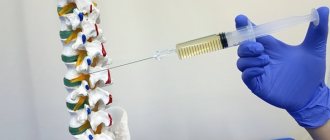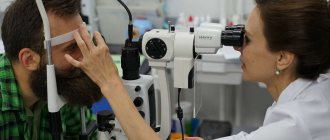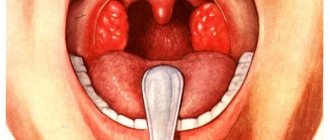The text is presented for informational purposes only. We strongly urge you not to self-medicate. When the first symptoms appear, consult a doctor. We recommend reading: “Why you can’t self-medicate?”
Acquired immunodeficiency syndrome (AIDS) is a late manifestation of infection of the body with the human immunodeficiency virus (HIV). AIDS is not a disease, but a complex reaction of the body to a developing infection; you cannot become infected with AIDS, only with HIV infection. The abbreviation AIDS includes its main characteristics. Syndrome means a combination of several persistent symptoms. Acquired – a pathological condition manifests itself throughout life. Immune deficiency – the body’s ability to resist infectious and cancer diseases steadily decreases. It is impossible to completely cure the disease. With the help of medications, the development of activity and reproduction of the HIV virus is inhibited, which makes it possible to delay the onset of the final stage of the disease. Scientists are working on a vaccine. It is still under development. Only AIDS prevention can prevent the disease. It can take about 10 years from the moment of infection to the development of the last stage of immunodeficiency.
AIDS is the last stage of HIV infection
HIV infection is often equated with AIDS. This is not entirely true: if a person is infected with the immunodeficiency virus, this does not mean that he has AIDS. With HIV infection, the patient's number of immune cells gradually decreases. The fewer they become, the more symptoms appear. The entire disease cycle, from infection to death, is divided into stages. The last one (terminal) is AIDS.
Content:
- AIDS is the last stage of HIV infection
- GLOBAL HIV STATISTICS
- Denial of AIDS and HIV
- Causes and mechanisms of development
- Signs of the syndrome
- Forms of the syndrome
- Diagnostics
- Why is acquired syndrome dangerous?
- Treatment
- Life expectancy and causes of death
- How to protect yourself
What is AIDS
AIDS is the fourth and final stage of HIV infection, which usually occurs 10-15 years after infection. For the first few years, the disease does not reveal its presence in any way, so without taking tests it is impossible to independently find out about infection. However, when symptoms of immune deficiency develop, the patient’s health deteriorates sharply and serious illnesses appear.
The term AIDS is an abbreviation, abbreviation: acquired immune deficiency syndrome:
- Syndrome means that the period of illness is characterized by a whole complex of clinical manifestations.
- Acquired - means that this condition is not inherited, but acquired during the course of the disease.
- Immune deficiency - this means that at the stage of AIDS there remains a negligible number of immune cells (less than 200 CD4 cells per 1 ml of blood).
Previously, the definition of immunodeficiency syndrome also meant the condition of a sick person with a weakened immune system after severe chronic illnesses, exposure to radiation, due to long-term use of antibiotics or strong hormonal drugs. Now scientists and medical workers use this word only to refer to HIV-infected people who have AIDS. The remaining cases of weakened immunity are called secondary immunological failure.
Those infected with the virus do not always fully understand the dangers of AIDS. The fact is that if you ignore medical recommendations regarding taking medications, the human immune system is greatly weakened. Pathogenesis studies conducted by numerous infectious disease specialists have shown that viral cells deliberately reduce the population of CD4 lymphocytes. This is how immunity is suppressed. The man is slowly dying.
GLOBAL HIV STATISTICS
The first cases of infection were recorded in the 80s of the last century in the United States in gay men. Epidemiologists agree that the virus originates in Africa[1]. Today it has spread throughout the planet. Global statistics showed that during the year the number of new cases of HIV infection was 1.7 (1.2-2.2) million (2019) The number of people who died from AIDS-related diseases was 690,000 (500,000-970,000 ) Human. (2019) 75.7 (55.9–100) million people have become infected with HIV since the beginning of the epidemic. (2019). 32.7 (24.8–42.2) million people have died from AIDS-related illnesses since the beginning of the epidemic. (2019) In total, since the beginning of the epidemic, the number of deaths at the terminal stage is about 35 million people.
Thanks to the global expansion of access to antiretroviral therapy for people living with HIV, mortality from the syndrome has decreased by 51% compared to 2004. The number of new HIV infections has fallen by 40% since its peak in 1998. The number of new HIV infections has fallen to 1.7 (1.2–2.2) million in 2021, down from 2.8 (2.0–3.7) million in 1998. Despite the positive downward trend, global statistics indicate that 7,000 young women aged 15–24 years are infected every week.
The risk of contracting HIV is: – 26 times higher among men who have sex with men; – 29 times higher among injection drug users; – 30 times higher among people working in the sex industry; – 13 times higher among transgender people. Most of the infected are concentrated in Central and Southern Africa. The increase in patients continues to be greatest in Eastern Europe and Asia.
Denial of AIDS and HIV
In post-Soviet countries, people who deny the fact that HIV leads to the development of acquired immunodeficiency syndrome, or do not believe in the existence of this virus, are called AIDS dissidents. However, more and more doctors believe that being called that is too much of an honor, since the word “dissident” has a rather positive connotation. In the Western world, these people are called HIV/AIDS denialists (those who deny HIV/AIDS). In our country they propose to call them exactly the same. The views of these people, like supporters of any pseudoscientific theory, differ - some consider HIV and AIDS a scam and a hoax, others say that AIDS exists, but arises for other reasons. Some people believe that AIDS is curable, but antiretroviral therapy undermines the immune system. Some people recognize the existence of HIV, but call it not a dangerous virus.
The dissidents have the following arguments[2]:
- There is no real evidence that the virus exists. One of the participants in the movement, Eleni Papadopoulos-Eleopoulos, said that the pictures of the pathogen taken in 1984 are an image of crude cellular structures, not a virus. And there are no other photographs of HIV.
- In laboratory conditions, cells infected with HIV do not die.
- Antiretroviral therapy is a way to make money. Proponents of this hypothesis published an article about the observations in the Journal of Biosciences. Of the 36 people with AIDS who did not receive treatment, only three died. At the same time, out of 18,700 patients receiving antiretroviral therapy, 11,700 died. The advisability of such treatment in general is questioned by dissidents. They believe that the drugs themselves weaken the patient’s body and increase the risk of cancer and infections. And concomitant diseases with AIDS (pneumonia, tuberculosis, Kaposi's sarcoma, etc.) should be treated with medications aimed specifically at these ailments.
- HIV tests cannot accurately detect the presence of the pathogen. First, a group of supporters believe that in most cases the test "mistakes" antibodies to other diseases as antibodies to HIV. Secondly, the method for determining the level of immunity cannot be correct, since immunity decreases for many reasons, not just with HIV.
- In countries where infection is rampant, there are problems with drinking water, hygiene and nutrition. According to movement participants, this situation in itself leads to low immunity and increased chances of infections. In developed countries, people suffer from HIV and AIDS much less often.
Judging as a whole, the “adherents” of this sect claim that all the research was incorrect, the treatment methods are a deception, which costs many their lives. This group has many more dogmas, and all of them are aimed at stopping mass treatment of the disease, since it either does not exist, or we are not treating it correctly. In fact, all their arguments have no scientific basis. Scientists involved in AIDS/HIV, these guesses were recognized as pseudoscientific.
The most authoritative scientific publication, Science, published a whole series of articles refuting the dogmas of dissidents[3][4][5].
The virus was not just isolated and photographed, it was cloned. Its images and effects on cells leave no doubt that it is a pathogen. In 2002, scientists managed to record the movement of a microorganism into a cell. As expected, it gradually moves to the nucleus of the lymphocytes.
The claim that HIV does not kill cells is simply a fantasy. Almost immediately after the discovery of the pathogen, in 1984 it was found that it kills T lymphocytes. No other infection depletes immune cells as much as HIV. And in the final stages of such infection, AIDS occurs - the most severe form of the disease. Regarding antiretroviral therapy, observations have shown that opportunistic diseases respond well to treatment with conventional HIV drugs. But in the AIDS stage they are ineffective, unlike HAART (highly active antiretroviral therapy).
AIDS prevention
HIV prevention is the most effective means in the fight. Prevention includes the need to:
- have only one sexual partner;
- avoid sexual relations with unfamiliar and suspicious people, prostitutes, drug addicts;
- have no group contacts;
- use condoms;
- do not use other people’s machines, razors, toothbrushes, used medical devices;
- insist on disposable instruments in the office of a dentist, gynecologist, cosmetologist and other specialists.
The fight against AIDS must be carried out in the form of preventive measures by the healthcare sector. Medical prevention includes:
- examination of people at risk, donors;
- promotion of sex with a condom;
- testing all pregnant women for HIV antibodies;
- control of childbearing and avoidance of breastfeeding in infected women.
In hospitals, clinics and other medical institutions, AIDS prevention involves:
- Thorough hand washing with a disinfectant after working with infected material;
- when treating HIV patients, use only disposable equipment;
- If bedding, household items, or the environment are contaminated with secretions and secretions of an AIDS patient, disinfection must be carried out.
Why is it important to get tested regularly?
Knowing the result of the test will help you eliminate the uncertainty associated with worrying about the possibility that you may have HIV infection but don't know it.
Pros of testing:
- Knowing about the presence of the virus in the body, you can start taking antiretroviral therapy on time, eliminating the risk of opportunistic diseases, and also protect your sexual partner from infection.
- If the test result is positive, you will be able to seek detailed advice from your doctor for help and support.
- The earlier HIV infection is detected and antiretroviral therapy is started, the greater the chance of maintaining health.
- Your doctor can help you decide how to interact with family and friends or how to talk to someone you may have exposed to the virus.
- People who are most vulnerable to HIV infection may be tested 3 to 6 times a year. These are men who have sex with men (MSM); injection drug users (IDUs); Anyone who has had unprotected sex with more than one partner since the last test.
However, even those who are in a monogamous relationship should not forget about testing: you cannot know for sure whether your partner is faithful. Moreover, feeling guilty, he may be ashamed to tell you about those casual relationships that he had on his side.
It is worth considering that no test can detect HIV infection the day after infection. The time from the moment the virus enters the body until the production of antibodies to it is called the “window period.” Its duration varies depending on the properties of the virus and the characteristics of the human body.
Most tests do not detect HIV infection, but antibodies to it: the immune system begins to produce them after the virus enters the body. In 97% of people, antibodies are detected within 3 to 12 weeks after infection. During this period, the test can be carried out both in the laboratory (ELISA diagnostics) and using a home test system - using blood or saliva.
More sensitive tests (fourth-generation ELISA) detect antigens that are part of the virus itself and appear in sufficient quantities to be detected while antibodies have not yet appeared. Such test systems show results within 2-6 weeks after infection.
PCR diagnostics do not detect antibodies or antigens, but the genetic material of the virus. Due to its high cost and complexity, this method is used less frequently than others. It is able to show accurate results within 1 to 4 weeks.
People who test positive are called HIV positive That is, there is a virus in this person’s body.
HIV-negative - people whose test did not detect traces of the virus in the body.
Please know that just because one of you has been diagnosed with HIV does not mean that you should give up sex and/or relationships.
But this means that you need to start antiretroviral therapy as soon as possible. Your health and the health of your partner depends on it.
Don't be afraid of ARV therapy: although many HIV drugs in the past were very toxic, today they are no more dangerous than other drugs. They also have their side effects, but all of them can be avoided if you choose the right treatment regimen.
Remember: the regimen is selected by the doctor! He is the one who has all the necessary knowledge to determine which pills you need to take and on what schedule. Don't self-medicate!
If you experience side effects, tell your doctor at the AIDS center and ask him to find an alternative treatment regimen for you.
Causes and mechanisms of development
The only cause of AIDS is the immunodeficiency virus[6]. From the moment a pathogen enters the bloodstream until the development of the terminal stage, 9-11 years pass, more often it is considered to be 2-15 years. These are average indicators, because the development of infection depends on many related factors. The mechanism of development of AIDS is well studied. Penetration of the pathogen into the blood is the first stage. After this, the virus must gain a foothold in the human cell; for this it has the gp120 protein. This protein has an affinity for CD4 receptors on the surface of cells.
Most CD4+ is found on T helper cells, which is why they suffer from HIV. The virus gradually sinks into the cell, moving towards the nucleus. After penetration, information from the pathogen's RNA is transferred to human DNA. Because of this, other immune cells no longer recognize the danger and cannot attack the infected cell. Once integrated into the genome, the virus can “sit” without any signs for many years. The virus mainly replicates in dividing T cells. At the same time, it awakens when the cell performs its normal immune function. The virus then replicates, infecting new T-helper cells. Infected cells can die on their own, as dangerous or unnecessary, this is called apoptosis. If they do not self-destruct, they are killed by T-killer cells, this is the body’s normal response to the introduction of viruses [7].
No matter how CD4+ lymphocytes die, this leads to one result - the body cannot fight diseases. In the early stages, HIV-associated infections are treatable and the immune system is able to control most bacteria and fungi.
At the AIDS stage, the number of immune cells is reduced due to a high viral load. A person dies not from the infection itself, but from its consequences.
When did AIDS appear in the world?
Only in 1983, this terrible disease was officially registered in 40 countries. It became clear that a previously unknown infection was rapidly spreading among the population of different countries, adding more and more new victims to its list.
AIDS has changed the attitude towards many phenomena in biology, expanding the boundaries of medical knowledge and at the same time showing humanity how powerless it is in solving certain processes in the body.
Already in 1988, AIDS swept through 138 countries, infecting several thousand people. For the first time, scientists around the world were unanimous and concerned about the danger that the virus posed to the world's population. Moreover, it was not the sick, but the infected people who caused particular concern, because they did not even know about their infection and posed a danger to the healthy population. The most vulnerable victim among the population was the youth, the future and hope of all humanity. The first case of infection in Russia was recorded in 1987.
Signs of the syndrome
It is impossible to distinguish the first symptoms of AIDS. All precursors of the disease relate to HIV infection. During the incubation period, the virus may not manifest itself in any way; sometimes a person develops symptoms characteristic of the disease. These are fever, weakness, loss of appetite, swollen lymph nodes, pink skin rash, diarrhea.
Sometimes the asymptomatic course persists for many years. But the pathogen can be identified 3 months after infection by analysis. As viral copies multiply and the immune system is suppressed, more and more obvious signs of illness occur. A distinctive feature of HIV/AIDS is enlarged lymph nodes; this condition can last for several months. Patients experience migraines, pain in the hypochondrium, and fever. Conventional medications do not help much in this condition.
AIDS is differentiated from HIV infection according to several criteria: the patient’s condition, the number of T-helper cells and viral load. Normally, a person has from 500 to 1600 T-helper cells, even in a healthy person their number varies and depends on many factors. In HIV-positive people, their number gradually decreases with temporary plateaus. When the analysis shows 350 or fewer cells, prevention of diseases associated with immunodeficiency syndrome is prescribed.
AIDS is often accompanied by the following symptoms:
- weight loss;
- apathy and powerlessness;
- prolonged diarrhea;
- cough;
- forgetfulness, confusion, disorientation;
- painful or difficult swallowing;
- enlarged lymph nodes;
- fever.
Against the background of a severely weakened immune system, the body can no longer control opportunistic bacteria and fungi, which are the natural microflora of humans. In the terminal stages, patients face tuberculosis, Pneumocystis pneumonia, cancer, bacterial cardiomyopathy, and lymphoma.
Forms of the syndrome
If the immune system fails, a person easily becomes infected with other infections. Fungi and bacteria that a healthy body can contain, such as candida, get out of control. Tumors of internal organs and skin often develop. Depending on where the most health problems are located, there are five clinical forms of AIDS.
Pulmonary
This is the most common form of the disease, diagnosed in 50-80% of HIV-positive adults and children. In this course of AIDS, pneumonia of various etiologies accompanies the pathogens: pneumocystis, legionella, cytomegalovirus, aspergillus. Patients complain of high fever, prolonged dry cough, shortness of breath, and chest pain. Infections lead to oxygen starvation.
Sometimes the course is characterized by the absence of cough, sputum and wheezing. An accurate diagnosis is established after an X-ray examination of the lungs, when diffuse pulmonary infiltrates are detected.
Treatment of pulmonary forms of complicated HIV infections is often ineffective and is based on a complex scheme that depends on the general condition of the patient. In some cases, pneumonia occurs in a complicated form with severe intoxication and respiratory failure. Against the background of severe immunosuppression, reactivation of tuberculosis is most often observed.
Gastrointestinal
The dyspeptic or gastrointestinal form occurs slightly less frequently than the pulmonary form, 31-50% of patients. With this course, the intestines are most often affected by candida. Patients experience:
- progressive weight loss;
- prolonged diarrhea or obstruction;
- chest pain;
- pain when swallowing.
The gastrointestinal tract is affected not only by infections, but also by the HIV pathogen itself. Fungi and bacteria attack the entire digestive tract, and changes also occur in the liver, kidneys, and stomach. With this form of AIDS, the following are detected: salmonellosis, candidiasis (including stomatitis), colitis, isosporosis. The main danger is impaired absorption of nutrients, critical reduction in body weight, and loss of fat due to steatorrhea.
Cerebral
NeuroAIDS occurs in 15-20% of HIV-positive people. Most often it manifests itself as a secondary lesion of the central nervous system. This form is accompanied by: multifocal leukoencephalopathy, brain abscesses, acute and subacute encephalitis, meningitis. The manifestations of such diseases affect a person’s cognitive abilities, behavior and memory. When the central nervous system is damaged, there is loss of coordination, memory loss, headaches, and lethargy. A person may experience unreasonable anxiety and cannot tolerate bright lights and loud sounds.
In terms of the frequency of damage to individual organs and systems in AIDS/HIV, the central nervous system ranks second after the immune system.
In severe cases of the disease, disorders occur, including paranoid and schizoid reactions and dementia. In 2-3% of neuroAIDS, a brain tumor is diagnosed.
Disseminated
According to various sources, from 30 to 50% of patients encounter it. This type of infection is accompanied by tumors of the mucous membrane and skin. 85% of all cases of neoplasms in HIV-positive people are Kaposi's sarcoma and B-cell lymphoma, which are not only common, but also have a severe course and atypical features. AIDS-defining cancers in HIV-infected patients also include other types of malignant tumors, the incidence and severity of which have apparently increased significantly.
Against the background of decreased immunity, the body is much more easily infected with viruses, including: human papillomavirus, hepatitis B and C viruses, and Epstein-Barr.
Undifferentiated
Cases with symptoms of unknown etiology are classified as a separate clinical form. This includes prolonged diarrhea (3-5 months), asthenia, purulent complications, fever (up to 3 months), lymphadenopathy. This condition is called a complex of AIDS-associated symptoms.
Main symptoms
A decrease in the number of CD4 cells contributes to the transition of HIV infection to the next stage of development - secondary diseases provoked by opportunistic and other AIDS-associated infections. A decrease in the barrier function of the body, leading to the development of cancer and autoimmune diseases, is accompanied by a whole set of additional symptoms.
The most striking and indicative signs of the development of AIDS:
- a sharp decrease in body weight;
- weakness, malaise;
- constantly alternating fever and chills;
- persistently elevated body temperature;
- skin rashes;
- appearance of Kaposi's sarcoma;
- swollen lymph nodes;
- frequent diarrhea;
- nausea, vomiting;
- aching pain in the joints;
- cough.
In women, the clinical picture is more severe; immune deficiency syndrome is characterized by damage to the genitourinary system. The following diseases and symptoms occur:
- cervical erosion;
- absence of menstruation;
- itching, burning in the lower abdomen;
- the appearance of pustules;
- foul-smelling discharge from the urethra after urination;
- unnatural redness of the external genitalia;
- formation of bleeding ulcers.
Depending on the number of T-lymphocytes and clinical manifestations, an AIDS-associated symptom complex and AIDS-indicating diseases are distinguished.
In the first case, the patient has a complex of diseases of infectious, fungal, bacterial and viral origin, which can be successfully suppressed with medications. The number of CD4 cells is in the range of 200-500 per 1 ml of blood. Patients usually complain of fatigue, loss of performance, poor appetite, increased sweating (especially at night), and problems with bowel movements. The infected person develops opportunistic diseases; warts, boils, pustules, eczema, dermatitis, lichen and other lesions are observed on the skin.
During the stage of indicator diseases, the body’s ability to resist the influence of infections is significantly reduced, which indicates a complete destruction of the immune system. The number of T-lymphocytes does not exceed 100 per 1 ml of blood. A period of serious complications begins - the development of malignant tumors, destruction of vital organs, damage to the central nervous system.
Pathogenesis of the virus
The main link in pathogenesis is a reduction in the T-lymphocyte population. The process takes a long time and is caused by both direct cytolytic action and indirect mechanisms of activation of apoptosis in T-helper cells. The pathogen triggers the formation of a syncytium, which includes cells of the host organism containing CD4+ receptors on their surface, thereby deactivating and depleting the immune pool.
In addition to its effect on immunocompetent cells, the virus is neurotropic - the gp120 protein is toxic to neurons, the pathogen directly destroys nerve cells, sensitized lymphocytes and antibodies act on brain tissue. A decrease in local, humoral and cellular immunity leads to the activation of persistent infectious agents, which, in the absence of an adequate response of lymphocytes, macrophages and other immunocompetent cells, actively multiply and often cause generalization of infection.
Diagnostics
There is no single test by which a doctor can diagnose AIDS, but there is a series of tests that determine the presence of HIV. To make a diagnosis, it is necessary to confirm the presence of the pathogen in the body, establish the stage of the disease, and differentiate HIV from AIDS. To detect the virus in laboratories, the methods most often used are immunoblotting and enzyme-linked immunosorbent assay. The second one is cheaper, therefore it is used in free laboratories for mass testing. But its availability does not mean low quality results.
The enzyme immunoassay is 99% sensitive; it detects antibodies to the virus after the incubation stage. That is, even in the absence of symptoms, such a test will detect the presence of a pathogen. A positive result of an enzyme immunoassay must be confirmed by immunoblotting. This test detects antibodies to HIV proteins. Test data can be considered positive only if a person has antibodies to at least three types of protein in his blood.
In addition to antibody calculations, HIV and AIDS are detected by:
- Isolation of the virus itself in the blood. Very sensitive test, but expensive. Therefore, it is most often used in science rather than in practical medicine.
- PCR – polymerase chain reaction. Determines the RNA of the virus, but is carried out only in specialized laboratories. In addition to detecting infection, this test determines the viral load. Therefore, it is used at all stages of a confirmed disease to determine the effectiveness of treatment and the person’s condition.
- Determination of the HIV p24 antigen using an enzyme immunoassay is less sensitive and less specific than direct detection of HIV RNA in the blood.
Any of the tests is virtually painless; the person being tested only needs a little blood from a vein or finger.
New developments include self-tests using saliva or sputum. Rapid tests provide quick results in 15 minutes, which makes it possible to immediately bring data to the attention of patients in any setting. Positive results from rapid tests must be confirmed using standard blood tests. You can get tested for free in state laboratories and AIDS Centers; there are such in every regional center.
Risk group for immunodeficiency virus disease
Since the cause of AIDS is the penetration of pathogens into the blood, a high probability of infection is present in such persons as:
- Prostitutes, passive gays.
- Individuals who use drugs intravenously.
- Children whose mothers are infected or have human immunodeficiency syndrome.
- Persons undergoing transfusion, organ and tissue transplantation, endoscopy, and surgery.
- Health care workers who interact with body fluids of patients with AIDS.
Sources used in the article: https://www.KrasotaiMedicina.ru/diseases/infectious/AIDS, https://FoodandHealth.ru/bolezni/spid/, https://klinikanz.ru/vich-i-spid/, https://www.zppp.saharniy-diabet.com/vich-spid-1/posledstviya-2, https://www.ayzdorov.ru/lechenie_SPID_chto.php, https://SamMedic.ru/476653a-bolezn- spid-prichinyi-stadii-razvitiya-puti-peredachi-lechenie-i-profilaktika, https://dolgojit.net/spid.php, https://spid.center/ru/hiv/24/
Why is acquired syndrome dangerous?
A cure for HIV infection is not considered possible and thus requires lifelong drug treatment. The body itself cannot defeat it. After infection, the virus gradually destroys immune cells, opening the way for all other diseases. Because of this, carriers of HIV infection die from even the most banal ailments, such as a cold. Violation of social adaptation is also a serious problem for HIV-positive people. Society is only learning to perceive such people as equal and safe. Having learned about their status, people often commit suicide.
Until the terminal stage, associated infections respond well to treatment. But in the last phase, the drugs are no longer effective. Most often, patients have to deal with fungal, protozoal and bacterial infections and neoplasms.
Bacterial infections
Infection with bacteria is a very common phenomenon among carriers of the virus. Some of the bacteria are in our body, and some are found in large quantities around us. A healthy body can easily cope with them, but with AIDS, the immune system cannot control the development and influence of bacteria.
Localization of lesions:
- Leather. These are the most common infections for HIV-positive women and men. The main pathogens: Staphylococcus aureus, mycobacteria, Pseudomonas aeruginosa.
- Respiratory system. Tuberculosis and pneumonia are frequent “companions” of HIV. Bacterial lung infections are most common in children. The course is normal: fever, cough, moist wheezing. In the later stages of AIDS, the clinic is burdened by the combination of several infections.
- Gastrointestinal tract. Sometimes infection of the gastrointestinal tract occurs even before serious immunodeficiency. Patients are faced with salmonellosis, campylobacteriosis, and dysentery.
- Oral cavity. Periodontal disease is also common in patients with immunodeficiency. The most common diagnoses are gingivitis, stomatitis, ulcerative periodontitis, and tissue necrosis. In the absence of prevention and treatment, pathologies in the oral cavity progress rapidly.
Depending on the patient’s lifestyle and the quality of treatment, such infections may not occur or quickly disappear.
Lack of therapy leads to the fact that bacterial damage to one organ can spread to others. For example, with an oral infection, pathogens quickly spread to the gastrointestinal tract.
Fungal diseases
Among fungal infections for HIV-positive people, candidiasis, rubrophytia, lichen versicolor, and histoplasmosis are of greatest importance. The course and localization are different; in most cases, such infections recur, but are treatable.
AIDS diseases caused by fungi:
- Lichen versicolor (pityriasis versicolor) is a rash with thickening of the skin, affecting large areas of the body.
- Pneumocystis pneumonia caused by fungi. As a rule, it proceeds typically with fever, sputum production, and a lingering cough. She is being treated as an inpatient.
- Coccidioidosis is infection of the lungs by spores from the air. It manifests itself on the skin by the appearance of papules, plaques, ulcers, nodes, and fistulas. Patients need long-term prophylaxis with antimycotics.
- Rubrophytia - damage to the skin of the feet, legs, palms, and groin area. Blue spots with scales on the surface appear on the body.
- Candidiasis affects any part of the mucous membrane. Most often it manifests itself as candidal stomatitis in the mouth, genitals, and intestines. It is characterized by the appearance of a white coating with an unpleasant odor; in advanced forms, the development of ulcers and erosions.
- Cryptococcosis is a fungal disease with rashes on the skin and hair. At the first stages it resembles acne, then nodes form and unite. HIV-positive people are characterized by damage to the membranes of the brain, organs of the urinary system, and skin. For prophylaxis, itraconazole or fluconazole is prescribed for life.
Slightly less common at different stages of HIV is sporotrichosis caused by a dimorphic fungus. Infection occurs when scratched by thorns, thorns, or sharp plant stems. When the number of T cells is below 200, North American blastomycosis is characteristic. In the clinic: the appearance of nodes and plaques with the formation of scars. Localized on the face, skin of the torso, arms.
Viral infections
The influence of viruses affects the condition of the skin and mucous membranes. People with reduced immunity are most often faced with herpes zoster, genital warts, molluscum contagiosum, and hairy leukoplakia.
Infection occurs through contact with contaminated objects or the patient’s skin; damaged epidermis increases the risk of virus penetration.
Viral infections manifest themselves in the form of a rash, formations on the skin of different shades, white and gray spots in the mouth, and subcutaneous nodes. HIV-positive people should immediately consult a doctor if there are any changes on the body or mucous membranes. Treatment is usually long-term with the use of medications, compresses, diet and additional procedures.
Protozoal infections
Protozoal infections are infections caused by protozoan parasites. These microorganisms can only exist in the host and do not exist outside the “host” organism. AIDS-associated protozoal diseases:
- cryptosporidiosis;
- isosporosis;
- toxoplasmosis;
- microsporidiosis.
Infection is possible through sexual intercourse, cuts and exposure to infected fluid. All protozoal infections proceed in approximately the same way: prolonged diarrhea, abdominal pain, vomiting and nausea, weight loss. With toxoplasmosis - damage to the lymph nodes and mucous membranes of the eyes.
Tumors and other diseases
The human body with AIDS is also unable to control malignant and benign tumors. The most important is Kaposi's sarcoma, in which dark formations appear on any part of the body and internal organs. The second place in frequency is occupied by lymphomas; they are localized in the lymph nodes and internal organs. Outside the lymph nodes, the central nervous system and gastrointestinal tract are most often affected. Rarely, lymphoma affects the salivary glands, eyes, and lungs.
Women develop cervical cancer, most often carcinoma. Men who become infected through anal sex with men are diagnosed with anal carcinoma.
Tumors with reduced immunity are difficult to treat, but high-quality therapy helps curb the progress of the disease.
Patients can develop cancer in absolutely any part of the body. According to the latest WHO data, in developing countries, 4 out of 10 people infected are diagnosed with cancer. But the use of HAART and chemotherapy reduces this risk.
Treatment
Two tactics are used in the treatment of patients; more often they are combined together. The first and main component is antiretroviral therapy. It is aimed at combating the virus itself; drugs in this category inhibit the replication of the pathogen. By doing this, doctors strive to lengthen the lives of patients and improve their quality of life.
ART treatment should begin before immunity is significantly compromised. This is why it is so important to get tested for HIV periodically. In antiretroviral therapy, several drugs are used at once for better results. This is necessary so that the pathogen cannot adapt to the drugs. This strategy is called highly active antiretroviral therapy (HAART).
Best materials of the month
- Coronaviruses: SARS-CoV-2 (COVID-19)
- Antibiotics for the prevention and treatment of COVID-19: how effective are they?
- The most common "office" diseases
- Does vodka kill coronavirus?
- How to stay alive on our roads?
The second component of treatment tactics is the fight against other diseases that develop against the background of AIDS. This includes prophylaxis against fungal, protozoal, viral and bacterial infections. Additional therapy should not reduce immunity and cause minimal side effects. Some of the associated ailments are very difficult to correct. Therefore, it is very important for patients to prevent other diseases, follow the doctor’s recommendations and immediately seek help if there is any suspicion.
In addition to drug treatment of the main and concomitant HIV-associated diseases, “traditional medicine” approaches are practiced. These are general restoratives, including herbal decoctions, ointments and tinctures made from natural ingredients. Such methods can complement treatment, but cannot replace regimens and specialized treatment protocols. Any traditional methods should be used only with the permission of a doctor.
Life expectancy and causes of death
Life expectancy from detection of HIV infection to death is approximately 9-11 years. This period depends on the treatment, the patient’s lifestyle, and early diagnosis. If the infection is detected early and the patient receives HAART, life expectancy is estimated at 20-50 years. Without treatment, patients live 6-19 months from the moment of AIDS diagnosis; most often, death occurs within a year. The use of HAART extends this period by several years.
Death occurs from opportunistic diseases and tumors. Over the past decade, the number of deaths among HIV-positive people from causes unrelated to AIDS has been increasing. With high-quality therapy, a person can be a carrier of a pathogen for decades, but not experience AIDS.
How is it transmitted from person to person?
AIDS is one of the stages of HIV that affects CD4 lymphocytes (cells that destroy infectious agents and pathogens). With a decrease in the number of CD4 lymphocytes, an almost irreversible failure of protection begins and the sick person develops infectious processes and malignant tumors. More than ten years can pass from contracting HIV infection to developing AIDS. The advanced stage of AIDS is characterized as incurable and leads to death.
In most cases, infection occurs from an infected person during sexual contact. Infection can also occur during breastfeeding, childbirth or through blood. In an infected woman, the virus is present in the blood and vaginal secretions. An infected man has it in his blood and semen. Transmission of infection is possible through all types of sexual contact. The risk of its transmission increases significantly with casual sexual intercourse or the presence of several sexual partners.
Infection through blood can occur if the blood of an infected person enters the body of a healthy person. This possibility exists when using poorly sterilized syringes and medical devices, transfusion of contaminated blood, or using medical needles that were used by the patient. Drug addicts have a particularly high risk of infection through this route, since they often share one syringe with several people.
In addition, infection can occur from mother to child. This can happen during breastfeeding, during childbirth, or in utero. Pregnant women are recommended to get tested for HIV infection. The disease is rarely transmitted through the placenta. The probability that a sick woman will give birth to a healthy child is 70-75%.
During normal communication with infected people, the infection is not transmitted, so you should not be afraid of infection. Diagnosis and identification of signs of infection are carried out by doctors in specialized clinics and laboratories, taking the patient’s blood for analysis.
Risk groups for contracting AIDS:
- Drug addicts who use intravenous drugs.
- People who practice anal sex. In this case, a person’s sexual orientation does not matter.
- People who receive blood transfusions or organ transplants.
- Medical workers.
- Prostitutes and their clients.








